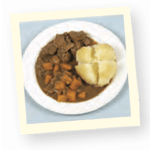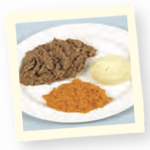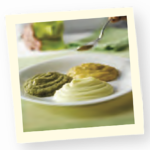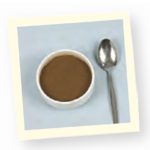WHAT IS DYSPHAGIA?
Neck, throat and upper gastrointestinal cancers can greatly affect one’s ability to normally chew and swallow food. Dysphagia is a medical term used to describe this swallowing disorder. Dysphagia is categorised by having a difficulty in chewing and moistening foods in the mouth, or in moving food from the mouth to the stomach. Dysphagia results in discomfort or an inability to swallow foods normally.
Weakness of the mouth and throat muscles can occur in dysphagia and may result in food or drinks “going down the wrong way”. This means that the food or drinks will go into the lungs instead of the stomach. This can cause chest infections. Modifying food consistency minimises the risk of choking or food or drinks entering the lungs (aspiration) and can also help to minimise; the feeling of food ‘getting stuck’ in the oesophagus. Liquids can sometimes be thickened (if recommended by your speech & language therapist), while solid foods are altered in texture.
Signs that you may be experiencing dysphagia/swallowing difficulties:
- Coughing and choking when you are swallowing food or drink
- A feeling of food ‘getting stuck’ in the gullet
- Food or drink ‘going down the wrong way’
- Coughing during or after mealtimes
- Your voice may sound wet after eating/drinking
- Food may be not be completely swallowed and some left in the mouth after a meal.
- You may be eating slower than usual, or eating smaller meals
- You may be experiencing unwanted weight loss.
Download the ‘Eating Well with Swallowing Difficulties’ book here.
There are four different texture diets that can be advised by your Doctor, Dietitian or Speech & Language therapist: soft, minced and moist, smooth pureed or liquidised. Soft foods are the least modified, while liquidised foods are the most modified.
-
Soft Diet

Food in this category may be naturally soft (e.g. ripe banana) or may be cooked to achieve a soft texture. Soft foods can be chewed but not necessarily bitten. Minimal cutting should be required to eat these foods and they are easily broken up with a fork. Food should be moist or served with a sauce or gravy to increase moisture content. Sliced meat is allowed once cut up finely, is easy to chew and extra sauce or gravy is added to soften further. Target particle size is 1.5 x 1.5cm for adults. Crustless bread is allowed unless specified otherwise. Avoid foods that are dry, hard, stringy, crunchy or sticky.
-
Minced and Moist Diet

Food in this category is soft, minced and moist and should easily form into a ball. Food particles are much smaller and should be 0.5cm in size. One uses their tongue rather than teeth to break the small lumps. Food is soft and moist and can be moistened with soup, sauce, gravy or milk. Food should be easily mashed with a fork. Lumps are soft and rounded (no hard or sharp lumps). Hard, stringy, crumbly and sticky foods are not allowed. All types of bread should be avoided in this diet. -
Smooth Pureed Diet

Food in this category is smooth and lump free. The texture of these foods should be similar to a commercial pudding consistency. At times, smooth pureed food may have a grainy quality but should not contain lumps. Smooth pureed food should be moist and cohesive enough to hold its shape on a spoon. Food can be moulded, layered or piped. -
Liquidised Diet

Foods in this category have a smooth, pouring, uniform consistency. This food has been pureed or sieved to remove any lumps. Liquidised meals are generally served in a bowl and should be thin enough to take through a wide bore straw. It should not be possible to eat liquidised meals with a fork. A high liquid content in this diet can make it low in energy and nutrients. Take extra care to try and boost calorie content of foods to ensure an adequate energy intake. It may be difficult to achieve this texture with certain foods such as pasta.
Certain foods are not suitable for individuals on a modified texture diet. These are foods that are difficult to chew or swallow or may pose a choking hazard. Foods that should not be eaten include:
- Stringy, fibrous foods such as celery, cabbage, kale or lettuce
- Mixed consistency foods may cause swallowing difficulties such as soups with lumps or cereal with milk.
- Rough, crunchy foods such as crisps, dry biscuits, crackers, nuts or toast
- Foods that crumble such as pie-crusts, crumble or bread crusts.
- Hard foods such as boiled sweets, chewy sweets and toffee.
- Foods with husks such as seeds, beans and corn with husks.
- Sit upright with arms and shoulders forward and don’t rest your arms/elbows on the table.
- Remain in the above position for at least 30 minutes after every meal/drink. Do not lie down after eating a meal.
- Avoid eating or drinking in a lying down position, it is difficult to swallow in this position.
- Never talk while eating or drinking.
- Take small amounts at a time, and eat slowly.
- Swallow twice on every mouthful.
- If you can hear a gurgly sound to your voice after swallowing, cough and swallow again
A texture-modified diet should ideally meet your daily needs for energy, protein, vitamins and minerals. However, if not planned correctly texture modified diets can be low in energy and nutrients, and this coupled with reduced food intake and limited palatability, means cancer patients can experience significant weight loss.
Added to the challenge of swallowing foods, cancer patients frequently have increased nutritional requirements because the cancer itself or its treatment can greatly alter how your body uses the food you eat. It is essential that unintentional, rapid weight loss is addressed as it has a negative impact on recovery.

One of the most important things you can do is monitor your weight. To track your weight you should weigh yourself weekly. Ideally this should be done on the same day each week, at the same time of day and on the same weighing scales. This is to make sure that all measurements are comparable. You should weigh yourself first thing in the morning in minimal clothing, after you have emptied your bladder.
The most important thing you can do during cancer treatment if you are experiencing weight loss and/or swallowing difficulties is to eat little and often, snack frequently and introduce calories wherever possible. It is essential that texture modified diets are adequately prepared and fortified to try to minimise weight loss.
If you have had an oesophageal stent placed by your doctor/ surgeon then it is important to follow a soft moist diet to help prevent the stent from becoming blocked:
- Eat only foods that are soft and moist and can be easily
- broken up with a fork or chopped into small pieces. Foods can be moistened with sauces
- and gravies. Desserts can be moistened with cream, ice-cream or custard.
- Take small mouthfuls of food at a time, chew foods properly and eat slowly.
- Avoid large lumps of food and dry foods.
- Sipping drinks during and after each meal can help keep the stent clear.
- Sit in an upright position when eating and for half an hour afterwards if possible.









 Contact
Contact